About Us
Welcome to the About Us page for The Times and The Sunday Times. Discover our editorial mission, policies and guidelines, company history, contact and ownership information and links to our help and social media pages here.

Company mission
The Times, founded in 1785 as the Daily Universal Register, is the oldest national daily newspaper in the UK and holds an important place as the “paper of record” on public life, from politics and world affairs to business and sport.
In his first edition, John Walter I explained that “like a well-covered table, it should contain something suited to every palate” including politics, foreign affairs, matters of trade, legal trials, advertisements and “amusements”. In its tone and political neutrality, Walter reserved the right of the newspaper “to censure or applaud either [political party]” and to cover contending issues with respectful “fair argument”. More than 200 years later, these founding principles hold true today. The Times has supported both New Labour and the Conservatives in recent times and supported Remain in the 2016 EU referendum.
In an age when world leaders routinely dismiss unwelcome reports as “fake news”, readers need a source they can trust for honest journalism that informs, entertains and analyses without bias. In The Times they can find agenda-setting investigations and exclusives, unrivalled coverage of politics and business at home and abroad, and a range of columnists from across the political spectrum showcased on our digital platforms and in print. Leading news reporting and analysis are complemented by an incisive Comment section, featuring columnists from across the political spectrum and the best satirical cartoonists. Other prominent fixtures include obituaries, business, sport, culture and puzzles (The Times introduced Sudoku to the nation in 2004).
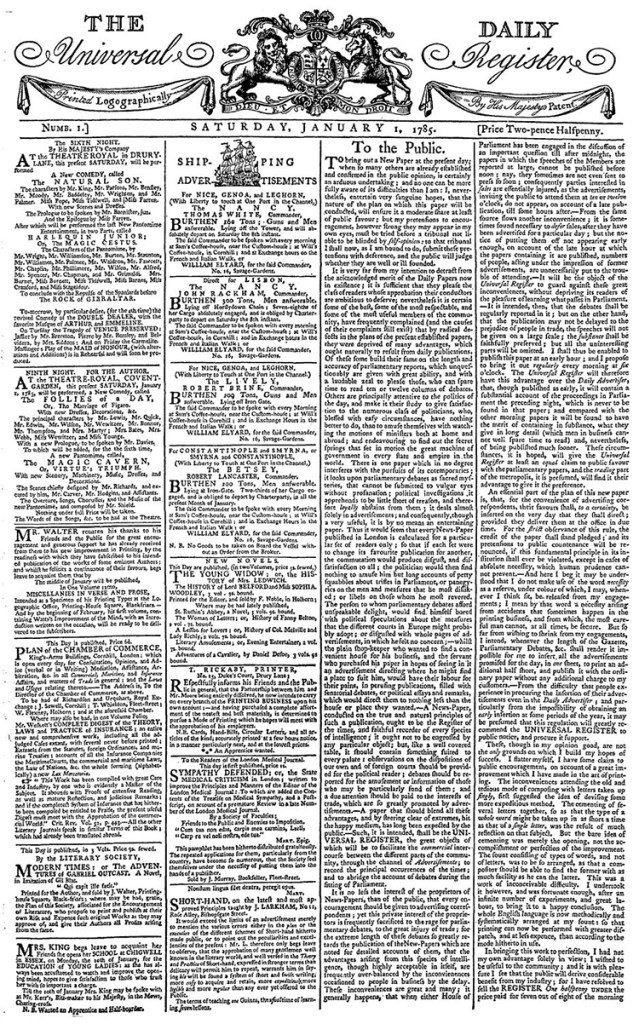
The front page of The Daily Universal Register dated January 1, 1785
The Times and Sunday Times have unrivalled specialists in science, health, education, environment and social affairs. While their well-connected teams of political reporters provide unique insight into the workings of Westminster and Whitehall, their royal correspondents combine authority with a record of delivering scoops that are followed by media around the world.
The foreign coverage of The Times is unmatched, with frontline reporting from award-winning writers and photographers such as Anthony Loyd and Jack Hill, and resident correspondents in key cities across the globe. Lively, expert coverage of business, sport, features, fashion, travel and food completes a weekly package unrivalled in its range and depth.

The Syriac Military Council, covered in reporting by Anthony Loyd
Times Photographer Jack Hill
The Times continues to innovate and to campaign for change. The Times Education Commission was a year-long project to examine every aspect of Britain’s education system and produce proposals for reform. Its recommendations were welcomed and endorsed across the political spectrum. The Times Health Commission, which published its report in February 2024, aims to do the same for health. The paper’s campaigns for clean air, clean water and safer cycling have all helped to effect real change.
The Sunday Times was founded in 1822 as a separate newspaper and has a history of innovation stretching from a female proprietor in 1887 and a female editor in 1894, through to pioneering the publication of large illustrations, book serialisations, separate sections and the first colour magazine supplement in 1962. The Sunday Times supported Leave in the 2016 EU referendum.
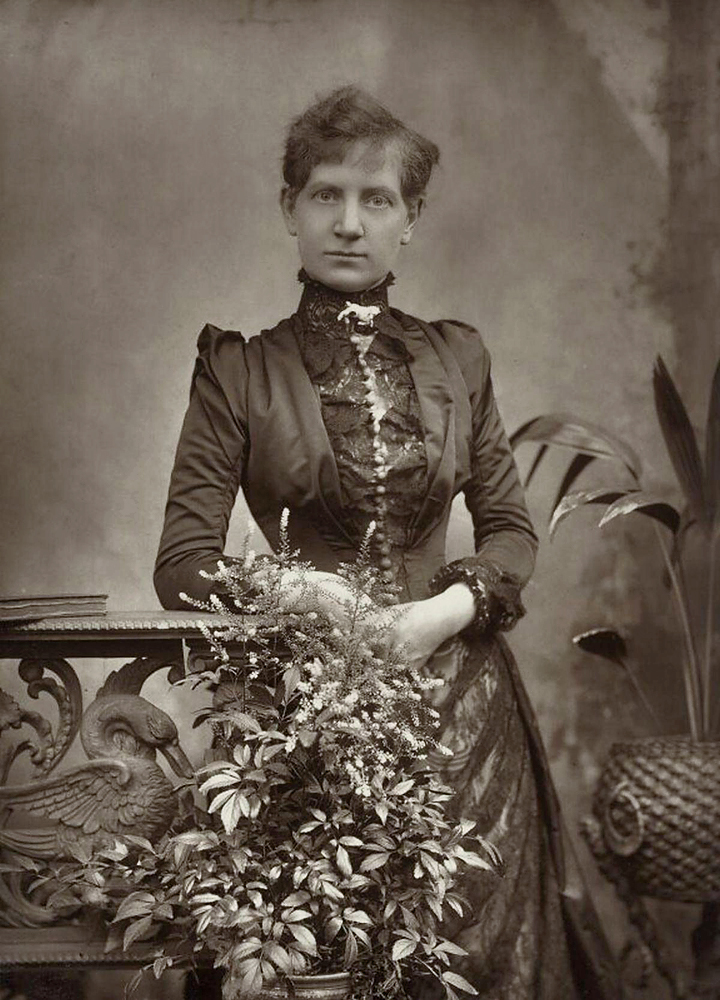
Alice Ann Cornwell, the first female proprietor of The Sunday Times, pictured in 1889
The Times and The Sunday Times were first held under common ownership by Lord Thomson in 1966 as Times Media Limited and were bought by Rupert Murdoch in 1981. Times Media is now part of News UK. Both papers introduced digital subscriptions in 2010 to help ensure a sustainable future for their journalism.
The titles are the biggest-selling quality print newspapers in the UK and in 2018 The Times was named Britain’s most trusted national newspaper by the Reuters Institute for Journalism at the University of Oxford.
Both The Times and The Sunday Times have landed some of the industry’s top awards for investigations, foreign reporting, magazine features and interviews. The Sunday Times won Sunday Newspaper of the Year at the Press Awards 2023 and The Times won Newspaper of the Year at the London Press Club Awards 2023.
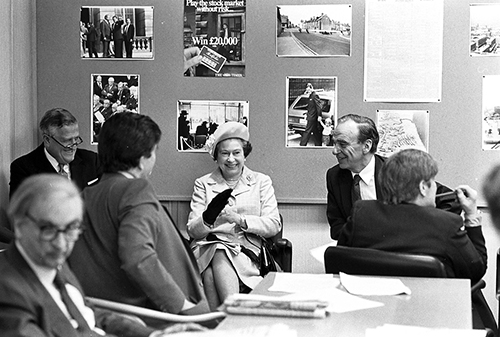
HM Queen Elizabeth II and The Duke of Edinburgh visit the offices of The Times Newspaper at Grays Inn Road, London to mark the paper’s bicentenary on February 28, 1985. Queen Elizabeth II was accompanied on her tour of the newspaper by proprietor Rupert Murdoch
Bill Warhurst for The Times
Key policies
The Times and The Sunday Times uphold News Corp’s manifesto, producing first-class journalism intended to:
• Inform
• Inspire
• Entertain
• Empower
• Promote a fair society
• Promote freedom of speech
• Tell the stories that matter, representing, reflecting and reaching the nation from every angle and every perspective
Both papers also embody News Corp’s key principles. We are:
Passionate about our commitment to our employees, stockholders, the free market and the global community.
Principled in our fidelity to the laws of nations in which we live and work and to the policies of this company, which require us to adhere to the highest standards of business conduct.
Purposeful about treating one another in the workplace with openness, respect and trust, and in treating customers, suppliers, partners and competitors in the marketplace with fairness and integrity.
The Times and The Sunday Times in numbers
Our team
Editor of The Times: Tony Gallagher
Editor of The Sunday Times: Ben Taylor
Deputy Editor of The Times: Maggie O’Riordan
Deputy Editor of The Sunday Times: Krissi Murison
Times Media Group Managing Editor: Victoria Watson
Times Media Head of Digital: Edward Roussel
Times Media Legal Director: Pia Sarma
Times Media General Manager: Tracy Yaverbaun
Chairman of Times Media Limited: John Witherow
EVP, Publisher, The Times & The Sunday Times: Chris Longcroft
Chief Executive, News UK & Ireland Ltd: Rebekah Brooks
Biographies of our management team can be found on News.co.uk.
Our journalists
Profiles of The Times and The Sunday Times journalists can be found on our authors index page.
More from The Times and The Sunday Times
Explore the world like never before with insider knowledge from our award-winning travel writers and enjoy unforgettable holidays with our exclusive offers.
Times Money Mentor provides free and independent reviews on saving, investing, pensions and ISAs, property, mortgages, retirement, equity release and more.
Live news and intelligent discussion of the stories that matter. Listen to Times Radio live for the latest breaking news, expert analysis and more.
The TLS, a weekly literary review, has published expert reviews and essays by the world’s best writers since 1902. It continues to set the standard for literary criticism over 120 years after its inception.
Go beyond the headlines with insight and expertise from journalists at The Times and The Sunday Times.
News, information and advice for business leaders to help them run and grow their companies.
The best of The Times and The Sunday Times’s environmental journalism.
Company history
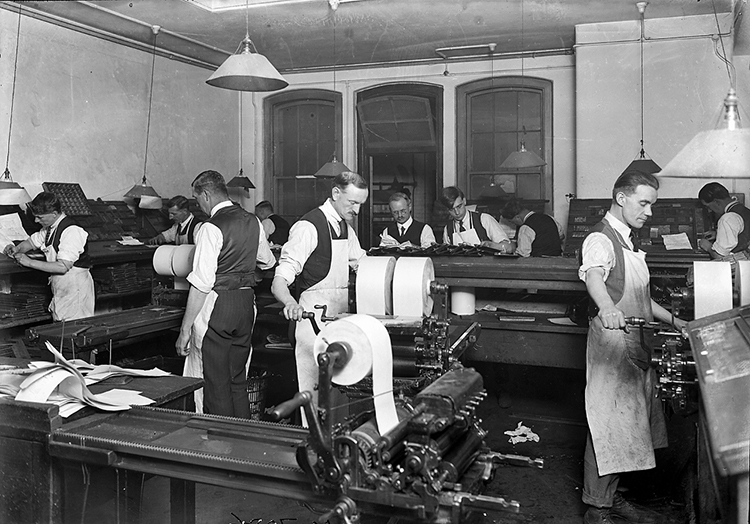
Glass plate of newspaper printers taken at The Times building and departments in Printing House Square, Blackfriars, London, 1927
The first issue of The Daily Universal Register was published by John Walter on January 1, 1785. Walter, a former coal merchant, saw the newspaper as a vehicle to promote his newly purchased logographic printing machine, and he hoped to fund it largely from advertising revenue, since the cover price of 2 ½ pennies undercut all its rivals.
Logography was claimed to be a faster and more accurate method of production because it enabled more than one word to be set at a time, but it failed to live up to its promise and was soon abandoned — as was the paper’s original name.
Three years after its launch Walter announced that the paper would from now on be known as The Times, explaining that the word “Register” risked confusion with other publications, including a popular catalogue of London prostitutes.
In a lengthy manifesto on the front page of the launch issue, Walter announced his plans for the new paper. It would, he said, cater to all tastes “like a well-covered table” and be beholden to no political party. As well as parliamentary debates, the paper would feature reports on important trials, ship news, market prices, theatre reviews, stock prices and notices of marriages and deaths. Nothing, Walter said, “shall ever find a place in the Universal Register that can tend to wound the ear of delicacy or corrupt the heart”.
Timeline
March 25, 1784 — The King’s Printing House in Blackfriars, southwest London, is purchased by John Walter.
January 1, 1785 — The first edition of The Daily Universal Register is printed. It is sold for 2 ½ pennies.
January 1, 1788 — After three years The Daily Universal Register is renamed The Times. It becomes the first newspaper in the world to use the “Times” name.
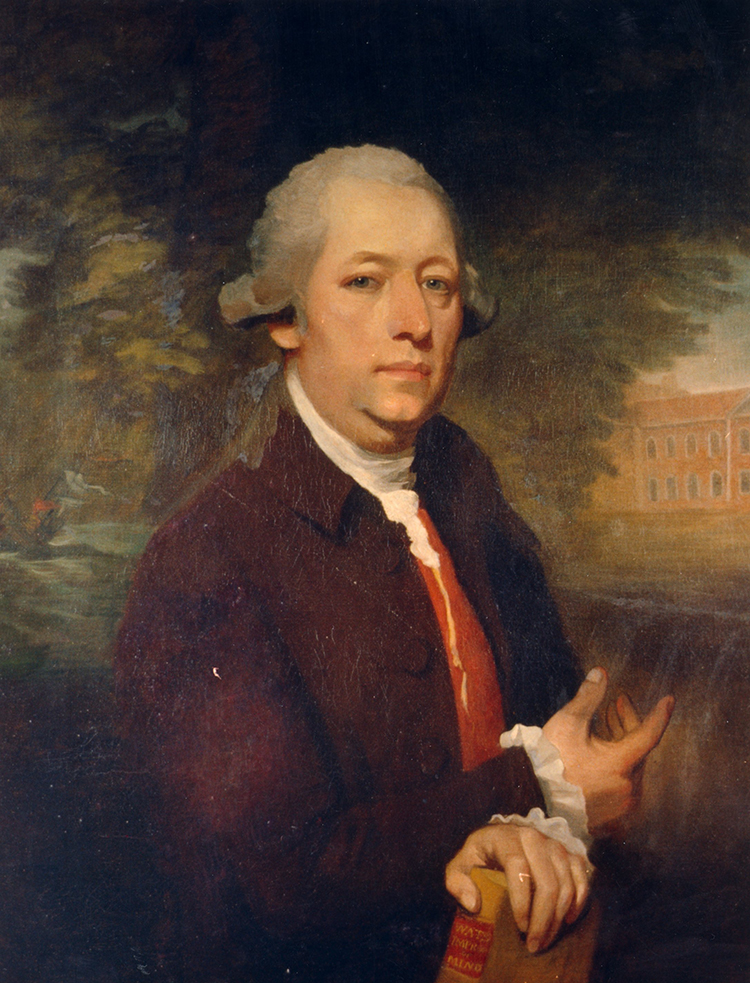
John Walter I, who founded The Times in 1785
1803 — John Walter II, the founder’s son, takes over the newspaper and expands it from 4 pages to 12 large pages.
November 7, 1805 — The Battle of Trafalgar is reported on the front page of The Times. This was selected as one of the 50 front pages of the millennium by the Press Gazette.
November 16, 1812 — John Walter dies, aged 74. He is buried at St Mary with St Alban in Teddington.
November 29, 1814 — The Times becomes the first newspaper in the world to print an issue with the Koenig and Bauer steam printing press. The new machine could print 1,100 pages an hour.
October 20, 1822 — The first issue of The Sunday Times is printed.

The front page of The Sunday Times issue No. 1, dated October 20, 1822
1830 — The nickname The Thunderer is first established after The Times criticises a coroner’s verdict on the death of Lord Graves.
January 3, 1841 — William Howard Ainsworth’s Old St Paul’s is serialised in The Sunday Times and runs in the paper until December 26. This is widely believed to be the first novel serialised in a British newspaper.
August 6, 1844 — The Times reports the birth of Queen Victoria’s second son, Prince Alfred, at Windsor. It’s the newspaper’s first story received by telegraph.
1848 — John Walter II’s son, John Walter III, takes over The Times.
October 12, 1854 — The Times launches the Soldiers’ Sick and Wounded Fund after reports of suffering during the Crimean War come from the newspaper’s Constantinople correspondent. The money raised funds the work of Florence Nightingale and her nurses in the Scutari and Therapia hospitals.
April 6, 1864 — Queen Victoria writes a letter in The Times defending her semi-retirement from public life after the death of Prince Albert.
January 1, 1868 — The Times is first printed with the Walter Press. It is a rotary printing press which uses cylinders to print and is designed by the newspaper.
January 1, 1870 — The Times becomes the first London daily newspaper to be typeset mechanically after Kastenbein composing machines are introduced. The machine could set up 298 lines of The Times and nearly 17,000 separate types in an hour.
July 13, 1878 — The Times Paris correspondent Henri de Blowitz obtains the text of the Treaty of Berlin. It is published in a second edition on the day it was signed.
October 17, 1878 — The Rapieff electric light system is installed at the Printing House Square machine room. It becomes one of the first places in England where electric light is in regular and constant use.
June 1, 1880 — The Times instals a telephone line between the Reporter’s Gallery and the composing room at its Printing House Square offices. This allows debates in the House of Commons to be reported up to 45 minutes later.
November 2, 1887 — Alice Cornwell buys The Sunday Times for £3,000 and becomes its first female proprietor.
June 1, 1890 — Flora Shaw becomes the first woman staff correspondent of The Times when she is appointed colonial correspondent. She was the highest-paid female journalist at the time.
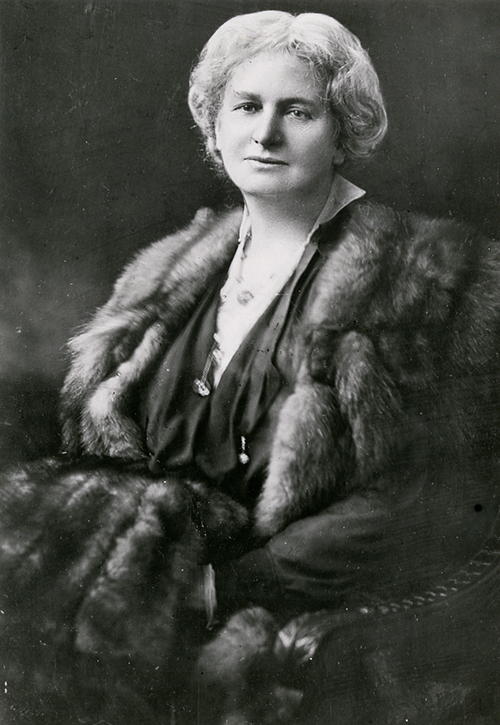
Flora Shaw, who became the colonial editor of The Times in 1893, making her the highest paid woman journalist of her day
June 19, 1894 — Rachel Beer, former editor of The Observer, becomes editor and proprietor of The Sunday Times.
April 8, 1895 — The first edition of The Times Atlas is published. It contained 117 pages of maps.
January 17, 1902 — The first issue of The Times Literary Supplement is published.
July 1, 1904 — The Times offers readers the opportunity to subscribe to its delivery service for one year. The paper would be delivered by newsagents or post. The scheme is believed to be the first in Britain.
March 16, 1908 — Lord Northcliffe purchases The Times. The newspaper leaves the Walter family after four generations.
September 6, 1910 — The first issue of The Times Educational Supplement is published.
September 21, 1914 — For the Fallen, a poem by Laurence Binyon, is first published in The Times.
March 2, 1922 — The Times publishes its first picture page.
November 30, 1922 — The Times breaks the news confirming the discovery of Tutankhamun’s tomb in Egypt’s Valley of the Kings.

The first images inside Tutankhamun’s tomb were published in the January 30, 1923 edition of The Times
February 1, 1930 — The first Times crossword is published.
November 23, 1930 — The Sunday Times becomes the first Sunday newspaper to publish a 40-page issue.
December 10, 1931 — The Times becomes the first newspaper in Britain to mechanically incorporate colour and monochrome photogravure paper. The Times Weekly Edition published eight pages of colour photographs in its Christmas number.
October 3, 1932 — Times New Roman becomes the first typeface to be developed by a newspaper for its own use when it is first printed in The Times.
November 15, 1937 — The Times starts its woman’s page.
January 21, 1940 — The Sunday Times replaces advertising with news on the front page.
September 25, 1940 — The Times offices at Printing House Square are directly hit by a German bomb at 1.52am. John Astor, the chairman of The Times, gives the order to resume running the presses 18 minutes after the bomb hit.

Printing House Square, offices of The Times newspaper, pictured in 1928
June 2, 1953 — The Times announces the ascent of Mount Everest by Edmund Hillary and Tenzing Norgay on the eve of the coronation of Elizabeth II.
December 1, 1955 — The Sunday Times becomes the sole sponsor of the first National Student Drama Festival. The festival was founded by the newspaper’s arts columnist, theatre critic and the National Union of Students.
September 28, 1958 — The Sunday Times launches its review section. It becomes the first British newspaper to be published regularly in two sections.
February 4, 1962 — The Sunday Times becomes the first British newspaper to publish a colour segment with the debut issue of The Sunday Times Colour Section.
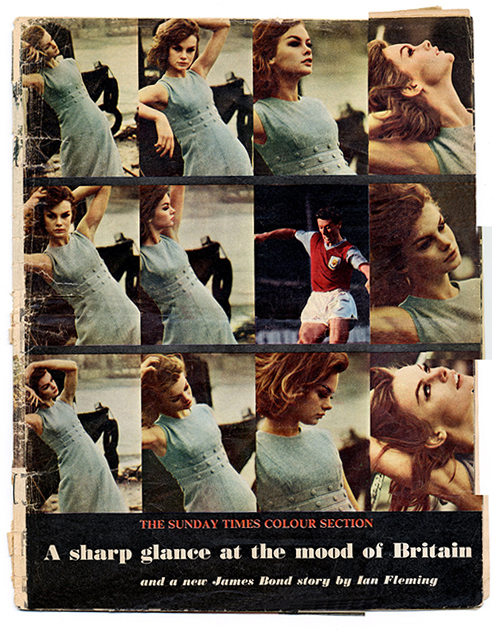
The Sunday Times Colour Section cover, February 4, 1962
David Bailey for The Sunday Times
February 17, 1963 — The first Insight section is published in The Sunday Times.
September 27, 1964 — The Sunday Times publishes its business news section. This makes it the first British newspaper to publish in three sections.
May 3, 1966 — News permanently replaces advertising on the front page of The Times.
1966 — The Times and The Sunday Times are brought under the same ownership by Lord Thomson. Times Newspapers Limited is formed.
January 23, 1967 — The Times begins using bylines for principal staff correspondents. The newspaper previously had a policy of anonymity.
September 9, 1969 — The Times becomes the first newspaper in the world to use a computer to make calculations of share dealings and typeset the page.
October 15, 1971 — The first issue of The Times Higher Education Supplement is published.
September 24, 1972 — The Sunday Times publishes its thalidomide campaign. This helped to prompt action from the House of Commons.
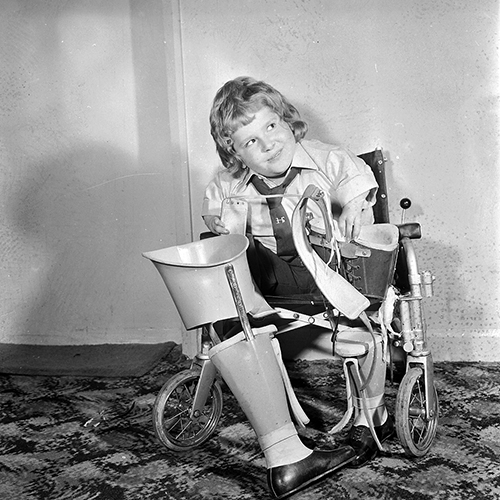
The Sunday Times photo of Thalidomide victim Fred Astbury painting at his home at Blacon Chester, October 1972
Peter Price for The Sunday Times
June 7, 1974 — The Times Literary Supplement ends anonymity for review authors.
February 14, 1975 — The first Valentine’s Day advertisements are published in The Times.
October 19, 1976 — The Times begins printing on thermo mechanical pump, TMP, which is a saving of 25 per cent of wood. It is the first major newspaper in the world to do this.
November 30, 1978 — The publication of all Times Newspapers Limited are suspended until November 13 1979 after an industrial dispute.
February 13, 1981 — Rupert Murdoch purchases Times Newspapers Limited for News International.
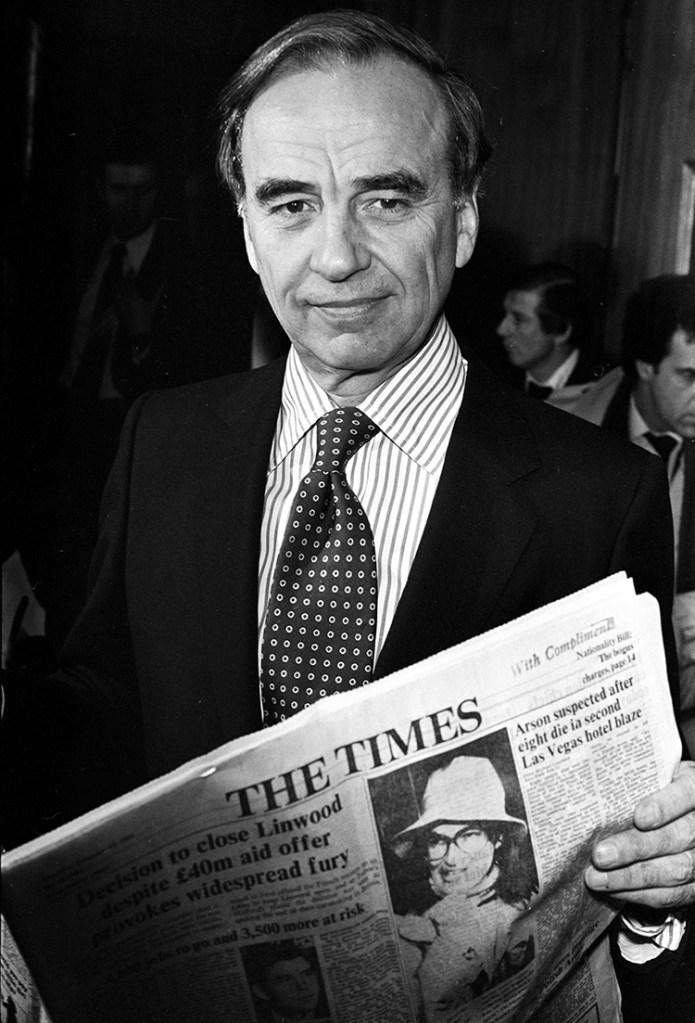
Rupert Murdoch pictured with a copy of The Times, 1981
January 19, 1986 — The classified advertisements section of The Sunday Times begins printing at a new plant in Wapping.
January 26, 1986 — The first issue of The Sunday Times to be printed at Wapping is published.
January 27, 1986 — The Times publishes its first issue from Wapping.
October 12, 1992 — The Times starts publishing in two sections.
March 13, 1993 — The Times Magazine is first printed as the Saturday colour magazine supplement of The Times.
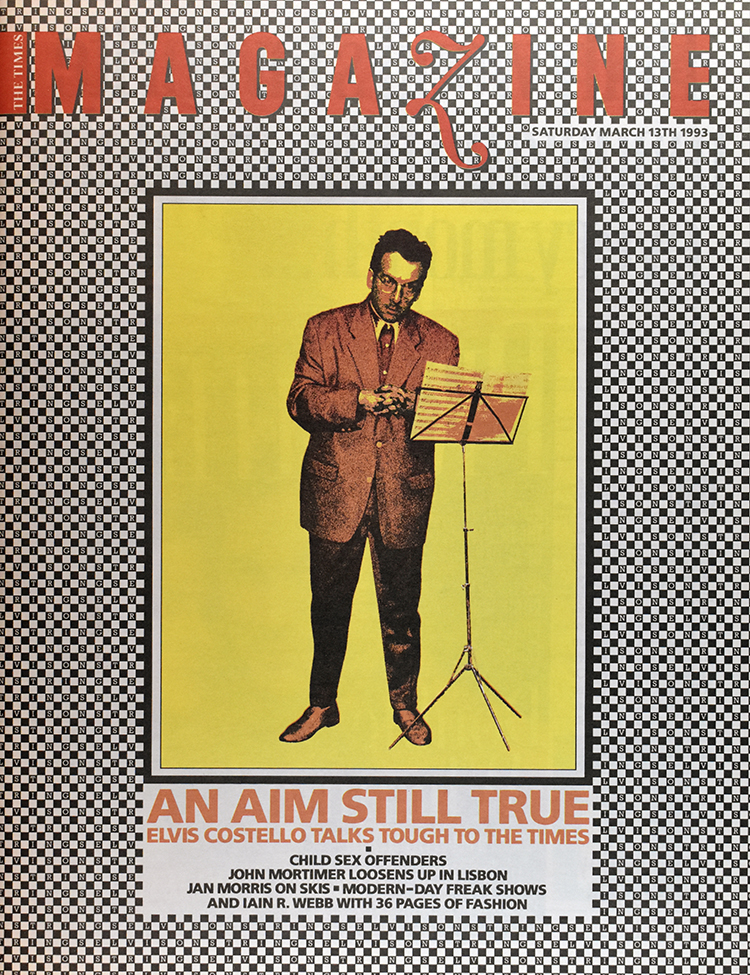
The front cover of The Times Magazine, March 13, 1993
January 1, 1996 — The Times launches its online website.
January 7, 1996 — The Sunday Times launches its online website.
July 20, 1999 — Times3, a pull-out from Section 2, is first published.
September 9, 1999 — The Times breaks its first story on the internet. It ran the Patten report on the RUC alongside an article written by the Northern Ireland correspondent at 10am.
May 22, 2001 — 15,000 copies of The Times are produced on the first day of printing at Kells in Ireland.
February 11, 2002 — The typeface of The Times changes to Times Classic from Millennium.
November 26, 2003 — The Times is published in compact format alongside the broadsheet.
October 30, 2004 — The Times is published in broadsheet format for the last time.
November 12, 2004 — The first Sudoku puzzle is published in The Times.
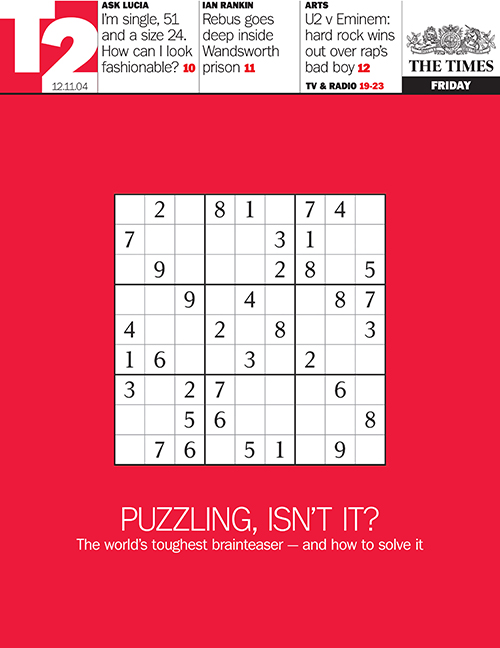
The Times T2 front page introducing Sudoku on November 12, 2004
October 18, 2005 — TSL Education Limited, which includes The Times Educational Supplement and The Times Higher Education Supplement, is sold to Exponent Private Equity.
November 20, 2006 — Times Classic is replaced by Times Modern as the new font for The Times. Edwina Ellis designed the font and the new masthead.
February 5, 2007 — The redesigned Timesonline website is launched.
May 2008 — The Times is printed in new plants in Hertfordshire, Merseyside and Glasgow. This enables the paper to be produced with full colour on every page for the first time.
September 7, 2008 — Culture+, a new club for The Times and The Sunday Times subscribers, is launched.
June 23, 2009 — The first Times Spelling Bee finals are hosted. St Martin’s School, Northwood, is crowned the winner of the first spelling championships for schools.
October 5, 2009 — Culture+ becomes Times+.
March 1, 2010 — A redesign of The Times is launched.
May 28, 2010 — The Times launches its iPad edition.

An early iPad homepage on The Times and Sunday Times app
June 25, 2010 — New websites for The Times and The Sunday Times are launched.
July 2, 2010 — The Times and The Sunday Times websites introduce a paywall and begin charging for paid-only content.
December 12, 2010 — The Sunday Times launches its iPad edition.
November 7, 2011 — The 25,000th Times crossword is published.
December 25, 2011 — The Sunday Times publishes iPad and Android editions on Christmas day for the first time. No print edition is published.
End of 2011 — Times+ membership reaches 500,000.
August 15, 2012 — The Times publishes an anthology of its coverage of the 2012 London Olympics.
March 2016 — The Times launches its rolling digital coverage. “Editions” of the online paper refresh at 9am, noon and 5pm on weekdays.
January 27, 2019 — The Sunday Times Tax List is published as a section in The Sunday Times Magazine.
June 29, 2020 — Times Radio is launched making The Times the first British newspaper to launch a radio station broadcast on multiple streams.
September 21, 2023 — Rupert Murdoch steps down as chairman of News Corp, moving into the role of chairman emeritus of News Corp and Fox. He is succeeded as chairman by his son Lachlan.
Campaigns and charity
Editorial campaigns
The Times and The Sunday Times have a long history of campaigning for societal and environmental change. The strength of their initiatives have won the support of prime ministers and other public figures of influence, inspiring and bringing about far-reaching, real-world impact. Find the latest campaigns below:
The Times Clean It Up campaign seeks to address the need for rivers and water bodies to reach good ecological status, bringing them closer to their natural state.
The Times Health Commission was a year-long scheme to address the most urgent challenges facing health and social care. Its commissioners aimed to identify problems and find solutions, drawing up recommendations in ten key areas.
The Sunday Times is calling on the government to take action to remove asbestos in more than 21,500 affected schools across the UK. This silent killer causes the deaths of more than 5,000 people a year.
The Times marked Celebration Day 2023 by planting 5,000 trees in collaboration with the National Trust. The planting of the trees both celebrates the memory of lost loved ones and helps clean the air we breathe, in line with the National Trust’s goal of planting 20 million trees by 2030.
The Times Education Commission was set up to examine the future of education after the coronavirus pandemic, with particular focus on social mobility, technology and the nature of work.
The Sunday Times and Inside Housing magazine joined forces in 2020 to help those trapped in Britain’s hidden housing scandal. The campaign called for five key action points to ensure safer housing for all. The campaign was backed by numerous organisations, individuals and politicians.
The Times Clean Air for All campaign demanded an anti-pollution bill to succeed the 1956 Clean Air Act. Winning backing from the former prime minister Boris Johnson, it sought to confer a legal right to unpolluted air for everyone in the UK.
Charitable campaigns
Times readers have always been quick to respond with compassion and practical aid for deserving causes, and since its early years The Times has given its support to charitable and philanthropic appeals, as well as giving space to campaigns to protect and preserve the natural world and sites of historical or cultural importance.
Since 1989 readers of The Times and The Sunday Times have also donated millions to the annual Christmas appeals, giving vital support to a range of charities such as Crisis at Christmas, Médecins Sans Frontières, Save the Children, the Outward Bound Trust, Wildfowl & Wetlands Trust and the Refugee Councils of Britain.
The Christmas 2023 appeal raised £2 million for Whizz Kids, Feeding Britain and Street Child.

Children at their school in Kwombo-On, Nigeria, waiting for their teacher to arrive. The school was built wit the aid of Street Child, a charity supported by The Times Christmas charity appeal 2023
Times Photographer Richard Pohle
Campaigners and philanthropists who have used the platform of The Times to generate support for their causes include Charles Dickens, William Morris, Lord Baden Powell, Rudyard Kipling, Sir John Betjeman and beyond. Some of the notable campaigns and funds are listed here.
1803: The modern press gallery in the House of Commons owes its existence largely to a leading article in The Times, complaining about the difficulty reporters had had getting into the house to hear the debate about the declaration of war against France under Napoleon Bonaparte. The Speaker responded by making a ruling guaranteeing access to the press.
1854: In 1828 and 1830 The Times had raised money from its readers for sufferers in Spain and France, but its first major campaign came about in 1854, in response to dispatches from the Crimean War. Thomas Chenery filed reports from the hospital at Scutari describing the appalling conditions for wounded soldiers, which were followed by a leading article berating the government and the publication of a letter from Sir Robert Peel starting a fund with a donation of £200. The Soldiers’ Sick and Wounded Fund was reinforced by vivid reports from the field written by the paper’s great foreign correspondent, William Howard Russell, and within a month had reached £12,000. The fund, and the paper’s almoner who went to the Crimea to administer its donations locally, was crucial in the success of the work of Florence Nightingale.
Some years after the war The Times published a letter from a Crimea veteran appealing for help for Mary Seacole, who had run a boarding house at Balaclava but had fallen on hard times since her return. Donations poured in from old soldiers who remembered her with affection and gratitude and ensured that her last years were passed in comfort.
1858: Closer to home, The Times instigated a campaign in support of “our homeless poor”. What became known as the Field Lane Ragged School Fund raised thousands to provide food and shelter for London’s destitute.
1913: The Times Crystal Palace Fund. The Lord Mayor of London appealed to The Times to support the campaign to buy the Crystal Palace and its grounds and make them public property. After an appeal to its readers, the donations, which were led by the King and Queen, allowed the full amount to be raised and Crystal Palace to be saved for the nation.
1914: The Times fund on behalf of the British Red Cross Society was opened on the outbreak of war in response to an appeal by Lord Rothschild, The Times committing itself to acknowledge all contributions in its columns. Some astonishing donations were received, and altogether by 1919, when the fund closed, more than £21 million had been raised, £16.5 million in cash through The Times fund. Donations even included motor cars and personal treasures which were auctioned for the cause.
1920: An appeal for structural repairs to Westminster Abbey received donations from all over the English-speaking world.
1925: The Dean and Chapter of St Paul’s Cathedral launched an appeal in conjunction with The Times to save the endangered structure of the building, especially the dome, which was threatening to collapse. The progress of the appeal was reported in The Times every day from its launch in January and by September more than £250,000 had been raised.
1926: In recognition of their work during the general strike, The Times launched a National Police Fund. Within a month £223,000 had been raised, which rose to more than £1 million by the next year. The money went to build a clubhouse for the Metropolitan Police at Imber Court in Surrey.
1929: After George V recovered from a serious illness The Times appealed for the establishment of a National Radium Fund. The £250,000 raised allowed the trustees to acquire radium for the treatment of cancer patients.
1934: HG Wells wrote a letter to The Times appealing for donations for the setting up of a special unit for diabetes sufferers at King’s College Hospital in London. The response was so successful that he wrote again the following year proposing the formation of an association which “would bring together people with diabetes”. The Diabetic Association was developed into the British Diabetic Association in 1954 and in 2000 it was renamed Diabetes UK.
1938: By carrying lists of donations, reports and associated letters and leaders, The Times was involved in Lord Baldwin’s Fund to raise money for refugees from Germany.
1956: Roger Bannister wrote to The Times launching an appeal to raise funds to enable paraplegics to participate in sport — an important forerunner of the Paralympics.
1999: £100,000 was raised by Times readers towards building of a bridge at Río Hondo, Honduras (after the devastating floods which hit the country in late February and early March). The bridge was opened in July 1999.
1999: Millennium Appeal launched to restore St Ethelburga’s church which had been reduced to rubble by the “Bishopsgate bomb” planted by the IRA on April 24, 1993, that killed Edward Henty, a News of the World photographer, and injured 51 people.
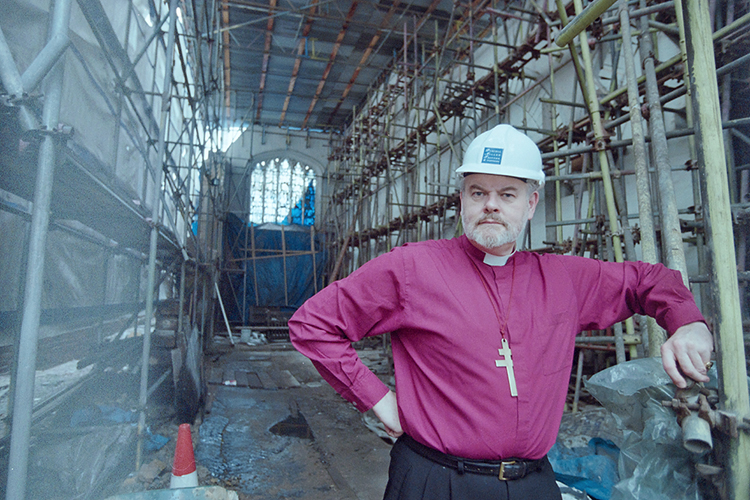
The RT Revd Richard Chartres, The Bishop of London at St. Etherlburga’s Church in Bishopsgate, June 29, 1999
Peter Nicholls for The Sunday Times
Ethics and code of practice
Editorial and business guidelines
The guidelines below embody the commitment of The Times and Sunday Times to producing quality journalism, reflective of News Corp’s key ethical values. Trust remains at the centre of our reporting, a mainstay at the heart of every action taken within and outside our newsrooms.
The below guideline documentations cover the standards to which we hold ourselves every day.
Editorial standards
The Times and The Sunday Times take complaints about editorial content seriously. We are committed to abiding by the Independent Press Standards Organisation (Ipso) regulations and the Editors’ Code of Practice that Ipso enforces. View the Editors’ Code of Practice.
Requests for corrections or clarifications in The Times should be sent by email to [email protected]. To complain about a Sunday Times story, please fill out this form. Corrections, clarifications and adjudications are published regularly where warranted on our corrections and clarifications page.
- The Times editorial complaints
- The Sunday Times editorial complaints
- Times Travel editorial complaints
You can also contact Ipso for advice.
Times Travel
Times Travel combines the experience, knowledge and nous of our leading experts from The Times and The Sunday Times with your unquenchable thirst for travel. All our guides are completely impartial, and we aren’t swayed by any financial incentives a company might be offering. If we say it’s the best, it’s because we believe it is.
We work with a select number of travel partners across our section and our award-winning travel journalism is supported via three main revenue streams: branded or sponsored content, affiliate links and direct offers, which you will find flagged across our pages.
Above all else, we take our editorial independence and integrity seriously. We continually evaluate our list of preferred partners and don’t hesitate to remove them if they’re not up to scratch. This is why our motto has “trust” in it: you can trust us to take you there.
Ownership
The Times and The Sunday Times are published by Times Media Limited, wholly owned by News UK & Ireland Ltd. Further information on News UK & Ireland Ltd can be found on News.co.uk.
News UK & Ireland is wholly owned by News Corp, a global diversified media business focused on creating and distributing content that educates, informs and inspires our customers. Further information on News Corp, including ownership information, can be found on Newscorp.com.
Contact information
Address: 1 London Bridge Street, SE1 9GF
Telephone: 020 7711 7888
Email: [email protected]
Full contact details can be found on the contact us page.
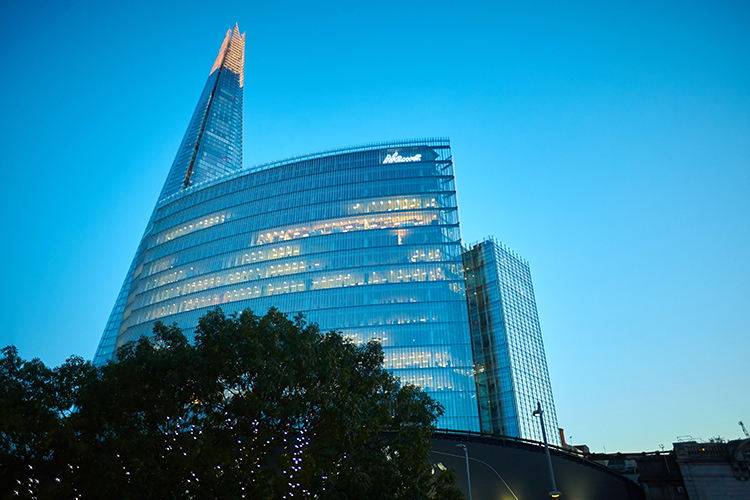
The News Building, home to The Times and The Sunday Times at 1 London Bridge Street
Alamy
Help
Visit our help page for more information on queries related to subscriptions, logging in/password resets, voucher booklets and more.
Social media
Follow The Times and The Sunday Times on your preferred social media platforms:
